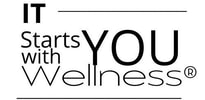1.4 (A) Fight or Flight Response
The "Fight or Flight" Response:
Built into our body is this wonderful feature called the “fight or flight” response. This totally normal reaction we have within us, gives us the ability to recognize when a threat is around us. It gives us the energy to fight, or to run.
What you need to understand is that the “fight or flight” response is there to protect us.
When we get stressed, stress hormones (like cortisol) are immediately released into the body which activates the “fight or flight” response. Once that fight or flight response is activated, the muscles will start to contract and become tense. This is where we may feel muscle tension, as it is preparing you for an upcoming situation, possibly even dangerous. What's important to realize, is that muscle tension is created in the body, for our protection.
Take for example, someone tries to punch you in the stomach. The muscles in the area will immediately tighten up in order to lessen the injury to the belly and other surrounding organs. Just think what would happen if our body didn’t tense up. To put another way, muscle tension is a response of the nervous system, in order to protect us.
What’s also important to recognize, is that the mind doesn’t recognize the difference between an anxious thought, or if you are in any actual danger. It only responds to the reactions, and feelings you portray to each situation that arises. It doesn’t know that being late for school isn’t life threatening. But, it will think it is, if you put enough worrisome energy into it. It only goes by your reaction. Same as, a thought or feeling may pass through your mind that would trigger a response to a past traumatic situation.
This is the power of the brain! More importantly, this is the power of your reactions, and why being aware of how you react to something is so important!
Built into our body is this wonderful feature called the “fight or flight” response. This totally normal reaction we have within us, gives us the ability to recognize when a threat is around us. It gives us the energy to fight, or to run.
What you need to understand is that the “fight or flight” response is there to protect us.
When we get stressed, stress hormones (like cortisol) are immediately released into the body which activates the “fight or flight” response. Once that fight or flight response is activated, the muscles will start to contract and become tense. This is where we may feel muscle tension, as it is preparing you for an upcoming situation, possibly even dangerous. What's important to realize, is that muscle tension is created in the body, for our protection.
Take for example, someone tries to punch you in the stomach. The muscles in the area will immediately tighten up in order to lessen the injury to the belly and other surrounding organs. Just think what would happen if our body didn’t tense up. To put another way, muscle tension is a response of the nervous system, in order to protect us.
What’s also important to recognize, is that the mind doesn’t recognize the difference between an anxious thought, or if you are in any actual danger. It only responds to the reactions, and feelings you portray to each situation that arises. It doesn’t know that being late for school isn’t life threatening. But, it will think it is, if you put enough worrisome energy into it. It only goes by your reaction. Same as, a thought or feeling may pass through your mind that would trigger a response to a past traumatic situation.
This is the power of the brain! More importantly, this is the power of your reactions, and why being aware of how you react to something is so important!
